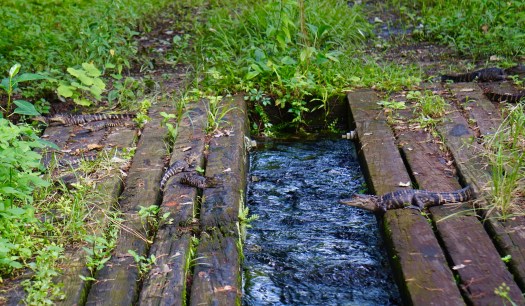by Nan Mattingly

As you set out to enjoy the riches of Bird Rookery Swamp (BRS for short) think of the people who have used this land before you. Some highlights:
From approximately 500 BC to 1600 AD, the fierce Calusa tribe traversed this huge swamp from their home base on the southwest Florida coast (in the vicinity of what is now Ft. Myers Beach) to their hunting and fishing camps at Lake Trafford in Immokalee. Waterways (rivers, streams, even sheet flow) were so plentiful that the Calusa traveled in canoes hollowed out from giant bald cypress trees harvested in Bird Rookery Swamp. They made use of what they found at Bird Rookery Swamp for their daily living needs; they ate the hearts of sabal palms and used the fronds to weave floor mats and to roof their dwellings. They harvested the fruit of cocoplums and pond apple trees, they fished the waters, and they used plants for medicinal purposes.

The bird plume trade drew feather hunters to Bird Rookery Swamp from the late 1800s to the early 1900s at which time state and federal laws were enacted to protect the birds. At the height of the trade, a pound of bird plumes was more valuable than a pound of gold, and the white ibis (known as the Chokoloskee Chicken) was considered a delicacy. Today Bird Rookery Swamp provides sanctuary for at least 45 kinds of birds, including some protected and threatened species.

The timber trade brought the next economic exploitation of Bird Rookery Swamp. In 1934, cypress wood sold for $60 to $100 per 1,000 board feet. Over 40 miles of elevated trails (called trams) were constructed to run a narrow-gauge train to extract harvested trees, which were sent to a mill in central Florida. Those trees, generally around 130 feet tall and 25 feet in girth, were 500 to 600 years old. Cypress was a hard, durable wood resistant to water and bugs. Cypress trees harvested at Bird Rookery Swamp were used to build PT boats during World War II, to rebuild war-torn Europe and to provide wood for homes sold through the Sears catalog. The last surviving steam engine used on the Bird Rookery Swamp trams is on display at the Collier County Museum. A court order in 1957 ended logging at Bird Rookery Swamp.



Farmers and ranchers have used Bird Rookery Swamp lands since the late 1800s to grow orange trees and to plant field crops such as tomatoes, melons and potatoes. If you look carefully into the Bird Rookery Swamp forest, you’ll see a few derelict barbed wire fences, relics of the cattle ranching that ended in the mid-1970s.































